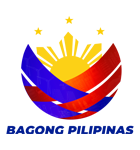LEGAZPI CITY, Albay (PIA) – The Bangko Sentral ng Pilipinas (BSP) has launched the Paleng-QR Ph Plus program in Legazpi City.
This program aims to promote digital cashless payments in public markets, local transportation, and business establishments by using a QR code to send and receive money.
Lawyer Tomas Cariño Jr., BSP Southern Luzon regional director, said Legazpi is the second local government unit (LGU) in the Bicol region to adopt the program, following the city of Naga last year.
The goal is to expand the adoption of digital payment acceptance in every city and municipality in the country.
“Ini-encourage namin ang mga LGU na i-adapt ang Paleng-QR gaya ng ginawa natin dito sa Legazpi. Through this, ang mga mamamayan, mamimili, pati na mga negosyante, hindi na sila gagamit ng pera, yung QR code na lang ang gagamitin nila,” Cariño said.
(We encourage local government units (LGUs) to adopt the Paleng-QR system, similar to what we implemented in Legazpi. This way, our constituents, consumers, and businessmen can use QR codes instead of cash.)
How to use the QR Ph
Cariño said the BSP is aiming to digitize financial transactions across the entire Bicol region. Technical briefings are currently underway for other LGUs in Albay and the provinces of Sorsogon, Masbate, and Catanduanes.
The LGUs can implement the program by issuing policies or ordinances that require market vendors, tricycles, and other merchants to use QR Ph digital payments.
Mayor Geraldine Rosal of Legazpi City expressed support for the program, recognizing its important role in helping local vendors adapt to the rapidly changing technology.
“This is very important since the pathway of today’s generation is through digitalization. This program is one way for our vendors to cope with our society’s fast-changing technology and digitalization,” Rosal said.
To use QR Ph, customers will need a smartphone with a camera and a reliable data/internet connection. They must download the mobile app of their chosen bank or non-bank electronic money issuer (EMI).
Currently, QR Ph can be used for person-to-person money transfers through InstaPay with 15 participating providers. More banks and EMIs will be added in the coming months.
If the preferred bank or EMI is not yet a participant in QR Ph, money can still be sent instantly via the usual InstaPay route, as long as the bank or EMI is a participant in InstaPay. (With reports from Raiza Lucido/PIA5/Albay)













